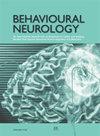识别潜在的体征和症状群,确定患者通过 3-OMD 测试进行 AADCd 筛查的优先资格:意大利德尔菲共识
IF 2.7
4区 医学
Q2 CLINICAL NEUROLOGY
引用次数: 0
摘要
简介。AADCd是一种极为罕见、诊断率极低的神经代谢性疾病,目前已有筛查试验(干血斑(DBS)上的3-OMD剂量)和靶向基因疗法(已在欧盟和英国获得授权)。因此,必须提高从业人员对症状和体征的认识。提供科学合理的信息以促进对具有正确症状和体征的患者进行筛查至关重要。材料和方法。鉴于在这一问题上缺乏可靠的证据,我们采用德尔菲法征求了专家对证据水平的意见。14 名指导委员会成员邀请 29 名意大利专家组成专家组,就与使用 3-OMD DBS 作为 AADCd 筛查方法有关的一系列关键但有争议的问题发表意见。根据年龄组的不同,症状和体征群被分为典型和非典型。研究了将其纳入新生儿筛查计划以及临床评分的实用性。采用五点李克特量表对每项陈述的优先程度进行评分。结果显示下列声明的优先级最高:对肌张力低下、发育迟缓、运动障碍和眼球震颤的儿科患者进行检测;将3-OMD剂量纳入新生儿筛查计划中的DBS;制定临床评分以支持选择患者进行3-OMD筛查;根据意大利患者的临床特征确定非典型表型:对智力障碍和帕金森-肌张力障碍患者进行检测。讨论。症状和体征群可用来确定3-OMD DBS检测的优先顺序。临床评分与患者的选择高度相关。在新生儿筛查项目中纳入3-OMD剂量被认为具有高度临床优先性。本文章由计算机程序翻译,如有差异,请以英文原文为准。
Identification of Potential Clusters of Signs and Symptoms to Prioritize Patients’ Eligibility for AADCd Screening by 3-OMD Testing: An Italian Delphi Consensus
Introduction. AADCd is an ultrarare, underdiagnosed neurometabolic disorder for which a screening test (3-OMD dosing on dried blood spot (DBS)) and targeted gene therapy (authorized in the EU and the UK) are available. Therefore, it is mandatory to raise awareness of presenting symptoms and signs among practitioners. Delivering scientifically sound information to promote screening of patients with the correct cluster of symptoms and signs would be critical. Materials and Methods. In light of the lack of sound evidence on this issue, expert opinion level of evidence was elicited with the Delphi method. Fourteen steering committee members invited a panel of 29 Italian experts to express their opinions on a series of crucial but controversial topics related to using 3-OMD DBS as a screening method in AADCd. Clusters of symptoms and signs were divided into typical or atypical, depending on age groups. Inclusion in newborn screening programs and the usefulness of a clinical score were investigated. A five-point Likert scale was used to rate the level of priority attributed to each statement. Results. The following statements reached the highest priority: testing pediatric patients with hypotonia, developmental delay, movement disorders, and oculogyric crises; inclusion of 3-OMD dosing on DBS in neonatal screening programs; development of a clinical score to support patients’ selection for 3-OMD screening; among atypical phenotypes based on clinical characteristics of Italian patients: testing patients with intellectual disability and parkinsonism-dystonia. Discussion. Clusters of symptoms and signs can be used to prioritize testing with 3-OMD DBS. A clinical score was rated as highly relevant for the patient’s selection. The inclusion of 3-OMD dosing in newborn screening programs was advocated with high clinical priority.
求助全文
通过发布文献求助,成功后即可免费获取论文全文。
去求助
来源期刊

Behavioural Neurology
医学-临床神经学
CiteScore
5.40
自引率
3.60%
发文量
52
审稿时长
>12 weeks
期刊介绍:
Behavioural Neurology is a peer-reviewed, Open Access journal which publishes original research articles, review articles and clinical studies based on various diseases and syndromes in behavioural neurology. The aim of the journal is to provide a platform for researchers and clinicians working in various fields of neurology including cognitive neuroscience, neuropsychology and neuropsychiatry.
Topics of interest include:
ADHD
Aphasia
Autism
Alzheimer’s Disease
Behavioural Disorders
Dementia
Epilepsy
Multiple Sclerosis
Parkinson’s Disease
Psychosis
Stroke
Traumatic brain injury.
 求助内容:
求助内容: 应助结果提醒方式:
应助结果提醒方式:


